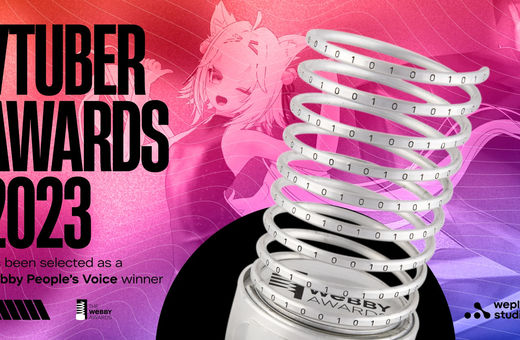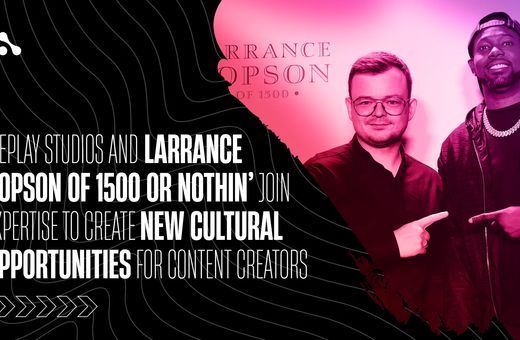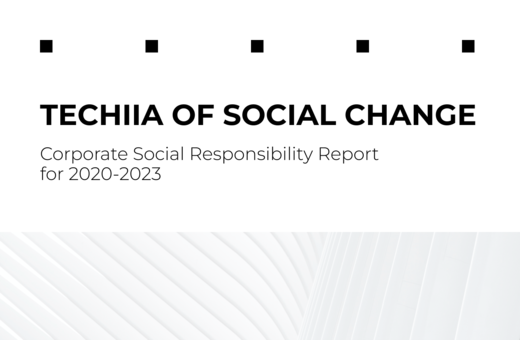
Three recommendations about working- and human relations in a team.
Ivan Rogovchenko is TECHIIA’s Chief Design Officer and also the Projector’s "Design Team Management” course curator. He has been working in design for 15 years, and three of them he has been leading creative teams. Ivan told Telegraf.Design about what problems the designer faces as a project manager and how to handle new tasks. The fourth article in the series on the transformation of a designer into a manager is devoted to teamwork.
No matter how hard you try to classify teams and people, it is always a unique mix of thoughts, beliefs, energy, and characters. The end result of a creative team completely depends on the mood. Therefore, the essential skill of a manager is not only to bring people together but also to support them when working together. And, of course, be able to say goodbye.
So I dedicate this part to relationships.
And if you haven't read the previous episodes, here they are:
0 -
1 -
2 -
How to monitor the mood and working condition of the design team?
I've heard stories of hypersensitive leaders who "read minds." Of course, with experience and years spent with colleagues, anything is possible. One look, one word, one smile, or no smile at all - and it is already clear how a person relates to the task or in what mood he/she works today.
But there is one 100% reliable way to monitor the mood, that is to have a conversation. To do this, I recommend setting up rituals that make it clear how they feel about work and things going on in their personal lives that might affect their work. Here is the list of the ones we use in our team.
1) One-to-one. The manager meets with his subordinate for 30-60 minutes to just chat about interests, difficulties, tasks, anything.
The frequency of such meetings varies greatly. I know companies that conduct them only at salary reviews. We in the holding recommend managers to hold at least short one-to-one every two weeks, it makes them less formal and more open. And where a person feels free, he/she is more open to a conversation. And the manager, of course, has to be more empathic.
At one-to-one, it is quite appropriate to talk about things that are not related to work and are acceptable for your level of contact: movies, leisure, new experiences, hopes. This is not a status meeting, but first of all an emotional agreement. But thanks to the cozy atmosphere, they can often solve complex work issues. For example, about the salary, conflicts, the desire to move to another position or leave the team.
2) Daily status report. This one is quick monitoring of work tasks only, literally 5-15 minutes a day. On statuses, we check whether everything goes as planned, anything that has to be prioritized, and where it is necessary to shift terms.
3) Weekly meetings between teams. This is a semi-formal ritual that’s useful for creative collaborations.
For example, teams of typesetting, communication design, product design meet together. They discuss achievements, share info within about an hour. It works a good synchronization and associated exchange of ideas.
4) Feedback session. The team or part of it meets for an hour and a half and discusses a working decision.
There are two rules for this: openness and constructiveness. It is also possible to track problems in group communication if any. You can try to disassemble them right away or take notes for the next one-to-one.
5) Knowledge-sharing session. People with different skills talk about their experiences. It can be in any format you like: from a lecture with a presentation during the working day to a friendly Q&A session during the cup of coffee.
6) Design party. That’s when we meet for a few hours in the biggest meeting room with the beer-pizza option in this format. The first part is a lecture from an external guest or one of our colleagues. The second is informal.
7) All-departments meeting. It allows developers to share news, achievements, and experiences with designers, designers with marketers, and so on. It is very useful for everyone because it reminds us that everyone creates only part of the value, and the company as a whole can not operate without proper interaction between everyone involved.
I may surprise you, but rituals, especially semi-formal ones, don't have to be initiated by yourself only. If there’s someone in your team who is interested in initiating and organizing, you should definitely support them and give them such a responsibility.
When talking about rituals, we definitely should take the pandemic into account. Last year, the need to shift online made changes to our rituals.
Fortunately, weekly meetings, one-to-one, performance review meetings worked well and without any problems. We even became more efficient: we spoke clearly about work issues and did not spend too much time on meetings.
But the creative meetings were not so pleasant. In terms of knowledge sharing, workshops, design parties in the spring of 2020 our teams were not so active. Colleagues desperately need a live interaction, a share of chaos, and going beyond the limits. So far, no online tool can provide this.
The big problem is to set up joint creativity and the work of a creative team that works completely remotely, to provide the same great result as in offline interaction. During the whole lockdown we were looking for a solution, but to reduce quarantine was the only thing that could help. We started meeting again in the office for workshops and brainstorms.
This challenge: toe remains relevant for design managers both in future possible pandemics and in the work of transnational teams.
Help in conflicts
Conflicts in the team are something usual. Society has put it in a negative context, but it is only a clash of two dissimilar opinions, truths, and/or perspectives. And very useful! Because in our profession, conflict allows us to come to cool design solutions when creative minds collide.
Don’t try to resolve the conflict at its very beginning. Observe and try to control it.
1. What is the dispute about?
There might be different understanding of processes when it comes to work approaches, results or some criteria. Teammates may rely on different ideas because you did not provide them with one common idea or goal. That’s something that should be clarified.
2. What is the purpose of the "conflict"?
If teammates hear each other's arguments and gradually bring out a new entity where both opinions have the right to live - keep monitoring such a conflict. It is a matter of a constructive solution. If they try to suppress each other's thoughts and even get too personal - you should stop such a conflict.
In our company, we motivate designers to make their own agreements. If there’s an emergency - the Team Lead takes the stage. His/her job is to clarify the situation with questions and explanations. Hear and analyze all the arguments, perceptions, and understanding of the same idea by both sides.
Maintain constructiveness and eyes on the topic. Remind both parties about the common goal and focus on the contribution of each party.
Keep from getting too personal by any party.
You must have a full picture of the situation. Especially if an employee to whom you are more loyal comes with a complaint about another. Understand the positions of all parties before chopping off heads. Often the full picture does not look the way as described by any party.
Keep the relationship
Few people like to talk about dismissal. But it's a part of life ‒ people come to the team and leave it someday. Great when they are with you for a long time. It's sad when they ran out of time in the company.
Separation can be initiated by both the manager and the employee. Most often, the desire of the first to dismiss is associated with the employee's inconsistency of duties, and the desire of the second to leave ‒ with underpayments. But these are just the tips of the icebergs. They, like other problems, appear where we are not very keen to hear the people around us.
This is your key task ‒ to hear yourself and set an example for others. Understand the motivation of the employee, accept opinions, do not react sharply and negatively. Face-to-face works best for this, where you analyze the difficulties and discuss methods of handling situations in a free conversation.
For example, it is difficult for an employee to respond to sudden super-fast tasks from management. His typical reaction is to respond sharply that he is busy now, which means he will not take on any other tasks. This may be his old habit.
Your job is to suggest a new method: take information, process it, estimate resources, and determine which tasks will have to be shifted. Answer in the form of a short report and leave the decision to the head. This does not inflame the situation and allows you to establish relationships between people. As a result, the algorithm is simple and without unnecessary emotions: we took the request → processed → answered → agreed on what to do next.
Most often, such recommendations are the result of a dialogue with the employee. It is important that he agrees with them. And even better ‒ he suggests a format.
If the designer continues to fail, do not wait for the explosion. Talk to the employee in advance, sort out the discrepancies by points. If it takes a long time to design, find out what slows it down, help rebuild the process, and speed it up. If he doesn't follow the brand book, he should focus more on it. And so on.
State the criteria by which you will check for changes. It is desirable to record them in writing. Have a reunion in 2-4 weeks. If there are no changes, we can say that it is time to stop cooperation. Or give a maximum of one more iteration if you know for sure that the employee had objective obstacles.
Alongside, check yourself for inflated expectations.
I had an experience when a designer in my imagination grew into a manager. He took a position and stopped coping. We fought for a while, and then calmly, face to face spoke in detail about his strengths. And it was a classic case from episode zero: a great desire to grow and be creative, but zero interest in management. So we rolled back a bit. The person continues to work and brings a lot of benefits to the company.
The eternal question: is it worth keeping those who are going to leave by their own choice?
People leave for different reasons. Someone wants another project, calmer or more driving. Someone ‒ more money, a new position. Someone is interested in changing the team. Find out what specifically attracts a person elsewhere that he misses here. Analyze how and what you can influence. Be sure to test yourself ‒ will you not press yourself with such steps, or will you create a negative imbalance in the team?
Such discussions should not turn into a trade. If a person thinks that he wants to leave, this thought has not come as a surprise. The usual salary increase will correct the situation only in a few months.
If the creative motivation is gone, if the designer has achieved his maximum, the only thing available to you is to honestly outline perspectives that he may not notice. Or admit it: yes, your maximum has been achieved, and I would have taken such steps in your place. The decision is up to him.
Now I am more and more inclined to believe that I will hardly stop those who decided to resign. Rather, I will take a retrospective, understand what and how we learned from each other. I will find a way to thank that person for the work and say goodbye on a positive note.
At the farewell point, no one knows in what projects and roles we can still cross. It is important to take care of the future. After all, a purely human relationship never ends ‒ they just change the format.
The last part of the great story of a designer who becomes a manager will be about what is often forgotten in the world of burnout and eternal racing ‒ self-attention and self-support. Because if the manager can do it, then the team will be healthy.
Original article on


